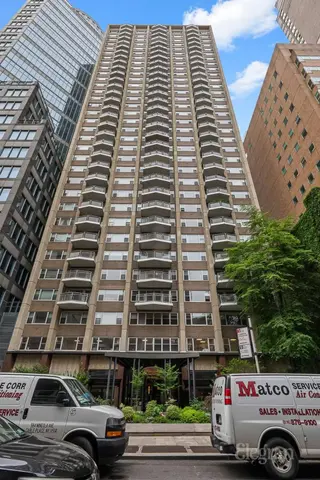 Carter Horsley
Carter HorsleyDec 23, 2011
Carter's Review
The Plaza Tower was built in 1964 and is one of the premier white-glove cooperatives on the Upper East Side. Nestled between Park and Lexington Avenues on East 60th Street the building spans 33 floors with 232 units, and contains everything from studios to three-bedrooms, some with outdoor space.
When constructed, the building was stepped back from the road in order to allow for a covered circular driveway with an inviting fountain. There is a 24-hour doorman and concierge, a common roofdeck with sweeping views of Central Park, an adjacent garage, central laundry, a package room, common storage, and bike storage.
The building is situated in the heat of all that the Upper East Side has to offer, including prime shopping at Bloomingdale’s and Bergdorf Gooman’s, and high-end dining at restaurants such as Amali, Philippe, Fig and Olive, and Harry Cipriani. If
Description
Most of the residential areas of Manhattan have been developed with low-rise buildings in midblock and towers on the avenues. This midblock apartment building that was completed in 1964 did not conform to that pattern as it took advantage of bonuses for providing a plaza that were introduced in the city's 1961 Zoning Resolution to build a sheer midblock tower set behind a plaza. As a result, "it introduced a staggering new scale to the area as it provided an early indication of the effects the city's new zoning regulations would have on residential design," wrote Robert A. M. Stern, Thomas Mellins and David Fishman in their book, "New York 1960, Architecture And Urbanism Between The Second World War And The Bicentennial," (The Monacelli Press, 1995).
The authors were disturbed by the "particularly jarring" height of the tower, which has no setbacks, noting that "Concrete piers that ran to the building's summit further emphasized its height."The building was designed by Samuel Paul and Seymour Jarmul, who extended its midblock plaza about 65 feet in from the building line. As the building was located around the Lexington Avenue corner from Bloomingdale's in one of the most congested sections of the city, it could have been argued that the building's plaza was providing desperately needed public space. The landscaped plaza, however, has a large curved driveway around a fountain leading to a large porte cochère. It provides an impressive entrance for the tower, but little in the way of public amenities for the neighborhood, and, indeed, the city would several years later enact new zoning to try to make new plazas more publicly beneficial.
The strong vertical emphasis of the tower's façade was heightened by the wedge-shape of the balconies. The glass panels of the balconies were probably an attempt to minimize their bulk, but the overall effect is a bit flimsy. Clearly, the new era of high-rise towers in this area that this building helped usher in was a far cry from the solid, impressive masonry of Park Avenue just down the block. Nevertheless, the tower straight-edge roofline and concrete piers contain the composition quite well and the massing concept is rather handsome, if one ignores the midblock location that happens to provide its residents with good views to the north and south.While the sidestreets just to the north are among the most attractive in the city, this block is not so distinguished so that the tower and plaza's impact is not as deleterious as the above-mentioned authors suggest although the principle they are concern about is very important.
Despite its retail fame, Bloomingdale's and its immediate surroundings were never more than lackluster architecturally until the completion in the late 1980's of International Plaza, designed by Helmut Jahn, across Lexington Avenue from Bloomingdale's. The area has improved and grown taller and Plaza Tower no longer "sticks out." The building, whose lobby was designed by Raymond Loewy/William Snaith, was converted to a cooperative in 1970 and has 232 apartments.The area has improved and grown taller and Plaza Tower no longer "sticks out." The building, whose lobby was designed by Raymond Loewy/William Snaith, was converted to a cooperative in 1970 and has 232 apartments.The area has improved and grown taller and Plaza Tower no longer "sticks out." The building, whose lobby was designed by Raymond Loewy/William Snaith, was converted to a cooperative in 1970 and has 232 apartments.

- Co-op built in 1964
- 3 apartments currently for sale ($525K to $675K)
- Located in Park/Fifth Ave. to 79th St.
- 232 total apartments 232 total apartments
- 10 recent sales ($415K to $1.4M)
- Doorman
- Small Pets Allowed only
 6sqft delivers the latest on real estate, architecture, and design, straight from New York City.
6sqft delivers the latest on real estate, architecture, and design, straight from New York City.
